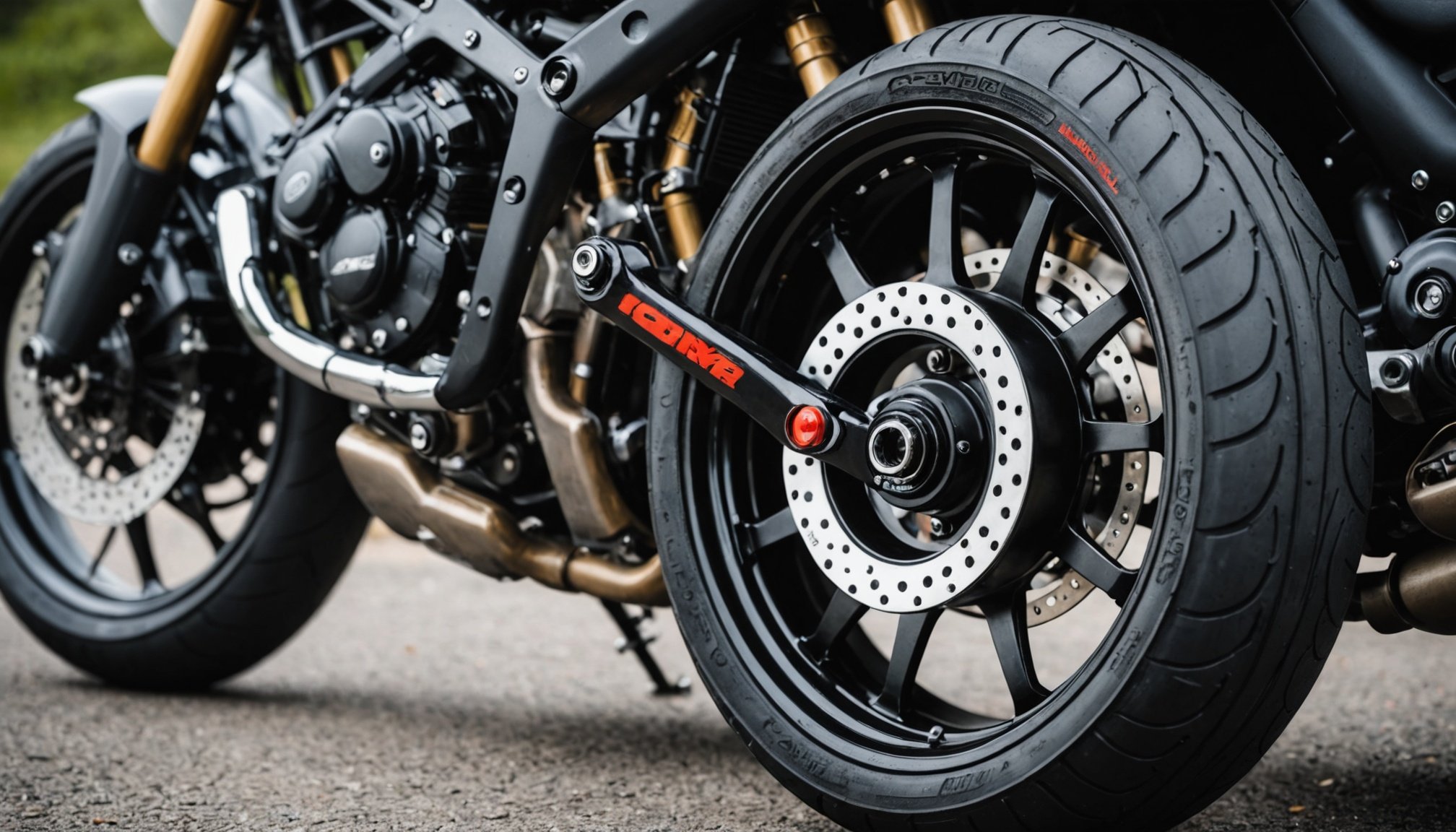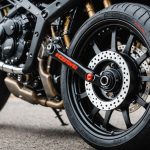Your Ultimate Guide to Installing a Sport Bike Tire Pressure Monitoring System: Achieve Real-Time Pressure Awareness with These Easy Steps
Why You Need a TPMS for Your Bike
When it comes to enhancing your riding experience, one of the most critical components to focus on is your bike’s tire pressure. Properly inflated tires can significantly improve your bike’s handling, safety, and overall performance. A Tire Pressure Monitoring System (TPMS) is an essential tool that helps you keep a real-time eye on your tire pressure, ensuring you’re always riding with optimal safety and efficiency.
“A TPMS is not just a luxury; it’s a necessity for any serious rider,” says Scot Holloway, CEO of Bartec TPMS, a leading brand in the industry. “It helps in maintaining the right pressure, which is crucial for tire longevity, fuel efficiency, and most importantly, safety on the road.”[2]
In the same genre : Ultimate guide to installing a gps lap timer on your sport bike: boost your performance tracking across uk racing circuits
Understanding TPMS Basics
Before diving into the installation process, it’s important to understand how a TPMS works. Here’s a brief overview:
Components of a TPMS
- Sensors: These are attached to the valve stem of each tire and measure the pressure and temperature in real-time.
- Display Unit: This is where you can view the data from the sensors. It can be a dedicated screen or integrated into your bike’s existing dashboard.
- Battery Life: Most sensors are battery-powered, with some models offering up to 5 years of battery life.
How TPMS Works
- The sensors transmit data wirelessly to the display unit.
- The display unit shows the current pressure and temperature of each tire.
- Some advanced systems can alert you to any anomalies, such as underinflation or overheating.
Choosing the Right TPMS for Your Bike
Not all TPMS systems are created equal, and selecting the right one for your bike is crucial. Here are some factors to consider:
Additional reading : Conquering uk emissions regulations: the complete handbook for sport bike compliance
Compatibility
Ensure the TPMS is compatible with your bike’s make and model. Some systems are designed specifically for certain types of bikes, so it’s important to check compatibility before purchase.
Sensor Type
There are two main types of sensors: internal and external. Internal sensors are installed inside the tire, while external sensors are attached to the valve stem. External sensors are generally easier to install and maintain.
Display Unit
Consider the type of display unit you prefer. Some systems come with a dedicated screen, while others can be integrated into your bike’s existing GPS or dashboard.
Additional Features
Look for systems that offer additional features such as real-time monitoring, alarm modes, and temperature readings. For example, the COSTYERT Motorcycle TPMS comes with 7 alarm modes and IP67 waterproofing, making it a robust choice for various riding conditions[3].
Step-by-Step Installation Guide
Installing a TPMS is relatively straightforward, but it does require some attention to detail. Here’s a step-by-step guide to help you through the process:
Preparing the Sensors
- Attach the Sensors: Screw the sensors onto the valve stem of each tire. Make sure they are securely fastened to avoid them coming loose while riding.
- Pair the Sensors: Follow the manufacturer’s instructions to pair the sensors with the display unit. This usually involves a simple pairing process using the display unit’s menu.
Installing the Display Unit
- Choose a Location: Select a convenient location for the display unit where it is easily visible while riding. For many riders, this is on the handlebars or integrated into the dashboard.
- Mount the Display Unit: Use the provided mounting hardware to secure the display unit. Ensure it is stable and won’t vibrate excessively while riding.
Powering the System
- Battery Installation: If your sensors are battery-powered, install the batteries according to the manufacturer’s instructions.
- Connecting to Power Source: If your system requires a direct power connection, ensure it is properly wired to your bike’s electrical system.
Testing the System
- Check Sensor Readings: Ensure each sensor is transmitting data correctly to the display unit.
- Test Alarm Modes: Activate the alarm modes to ensure they are working as expected.
Tips and Tricks for a Smooth Installation
Here are some additional tips to make your installation process smoother:
Use the Right Tools
- Make sure you have all the necessary tools before starting the installation. This includes a torque wrench for securing the sensors and any specific mounting hardware.
Follow Manufacturer Instructions
- Always follow the manufacturer’s instructions for installation. Each system may have unique requirements.
Test Thoroughly
- Before taking your bike out for a ride, test the system thoroughly to ensure everything is working correctly.
Common Issues and Troubleshooting
While installing a TPMS is generally straightforward, you might encounter some issues. Here are some common problems and how to troubleshoot them:
Sensor Not Pairing
- Check Battery Life: Ensure the sensor batteries are not dead.
- Restart the System: Sometimes, simply restarting the display unit and sensors can resolve pairing issues.
Incorrect Readings
- Check Sensor Placement: Ensure the sensors are securely attached to the valve stem.
- Calibrate the Sensors: Some systems require calibration after installation.
Benefits of Using a TPMS
Using a TPMS can significantly enhance your riding experience in several ways:
Improved Safety
- Properly inflated tires reduce the risk of accidents and improve handling.
- Real-time alerts for underinflation or overheating help prevent potential hazards.
Enhanced Performance
- Correct tire pressure improves your bike’s handling and stability.
- It also enhances fuel efficiency and tire longevity.
Convenience
- No need to manually check tire pressure before each ride.
- Real-time monitoring ensures you’re always aware of your tire’s condition.
Real-Life Examples and Anecdotes
Many riders have benefited from installing a TPMS on their bikes. Here’s an example:
“I installed a TPMS on my 2015 BMW GS Adventure, and it’s been a game-changer,” says a satisfied rider. “The system is truly plug-and-play, and it’s easy to operate using the wonder wheel. It takes just a few minutes to get used to, and now I can ride with the confidence that my tires are always at the right pressure.”[1]
Comparison of Popular TPMS Systems
Here’s a comparison table of some popular TPMS systems to help you make an informed decision:
| System | Sensor Type | Display Unit | Additional Features | Battery Life | Compatibility |
|---|---|---|---|---|---|
| COSTYERT | External | Dedicated Screen | 7 Alarm Modes, IP67 Waterproof | Up to 5 Years | Universal Compatibility |
| Bartec TPMS | Internal/External | Integrated into GPS/Dashboard | Real-Time Monitoring, Temperature Readings | Up to 5 Years | Specific Models |
| Fobo Bike | External | Smartphone App | Real-Time Monitoring, GPS Integration | Up to 2 Years | Universal Compatibility |
Frequently Asked Questions
Here are some frequently asked questions about TPMS systems:
How Often Should I Check My Tire Pressure?
- It’s recommended to check your tire pressure at least every two weeks or before each ride. A TPMS eliminates the need for manual checks, providing real-time data.
What is the Minimum Tread Depth for Motorcycle Tires?
- The legal minimum tread depth is typically 1mm, but for optimal grip and safety, it’s recommended to replace tires when the tread reaches 2mm[4].
Can I Install a TPMS Myself?
- Yes, most TPMS systems are designed for DIY installation. However, if you’re not comfortable with the process, it’s always best to consult a professional mechanic.
Installing a TPMS on your sport bike is a simple yet highly beneficial upgrade that can enhance your riding experience significantly. With real-time pressure monitoring, you can ensure your tires are always at the optimal pressure, improving safety, performance, and convenience.
By following the steps outlined in this guide and choosing the right TPMS for your bike, you’ll be able to ride with confidence, knowing that your tire pressure is always under control. Whether you’re a seasoned rider or just starting out, a TPMS is an investment that will pay off in the long run, making every ride safer and more enjoyable.










